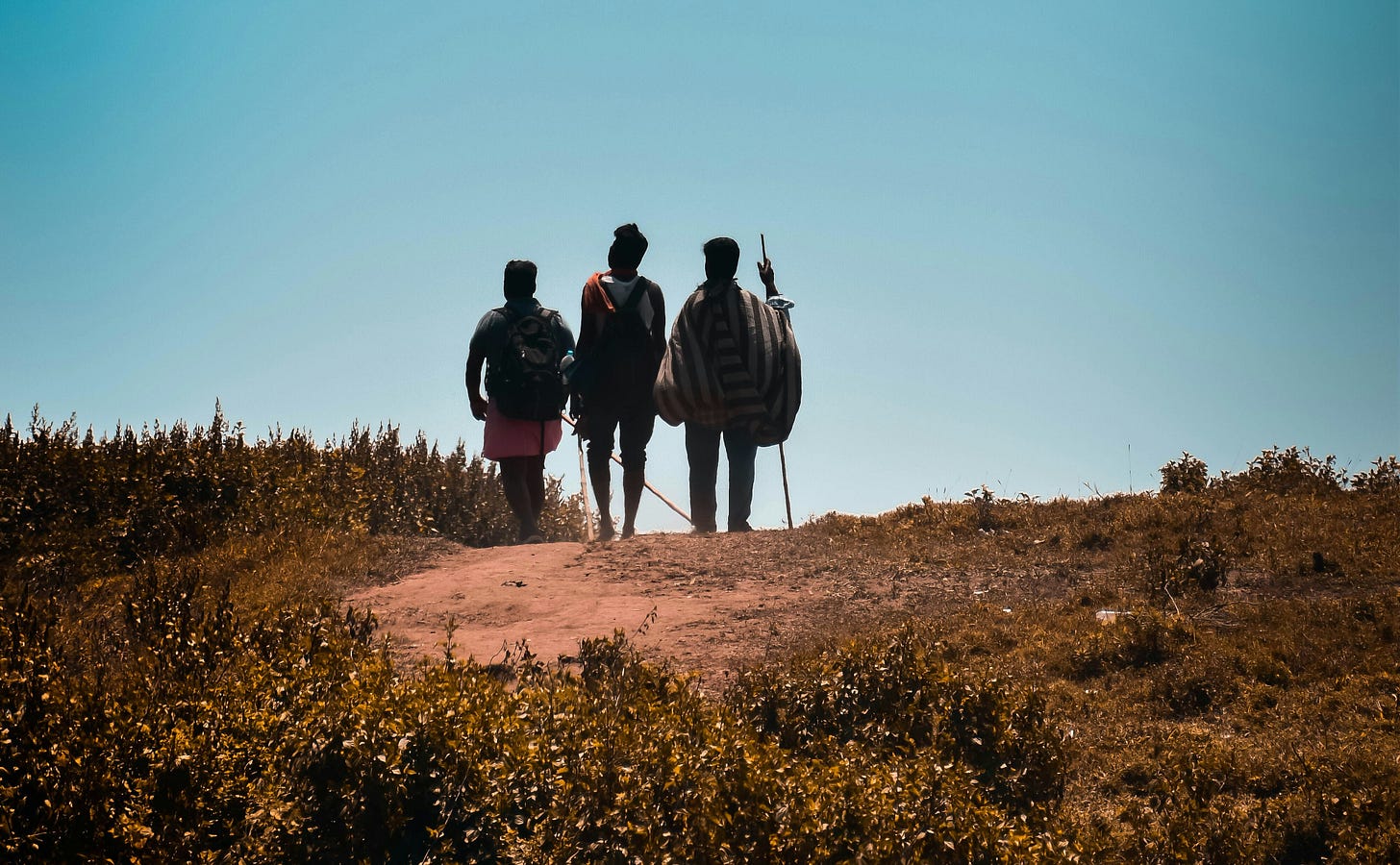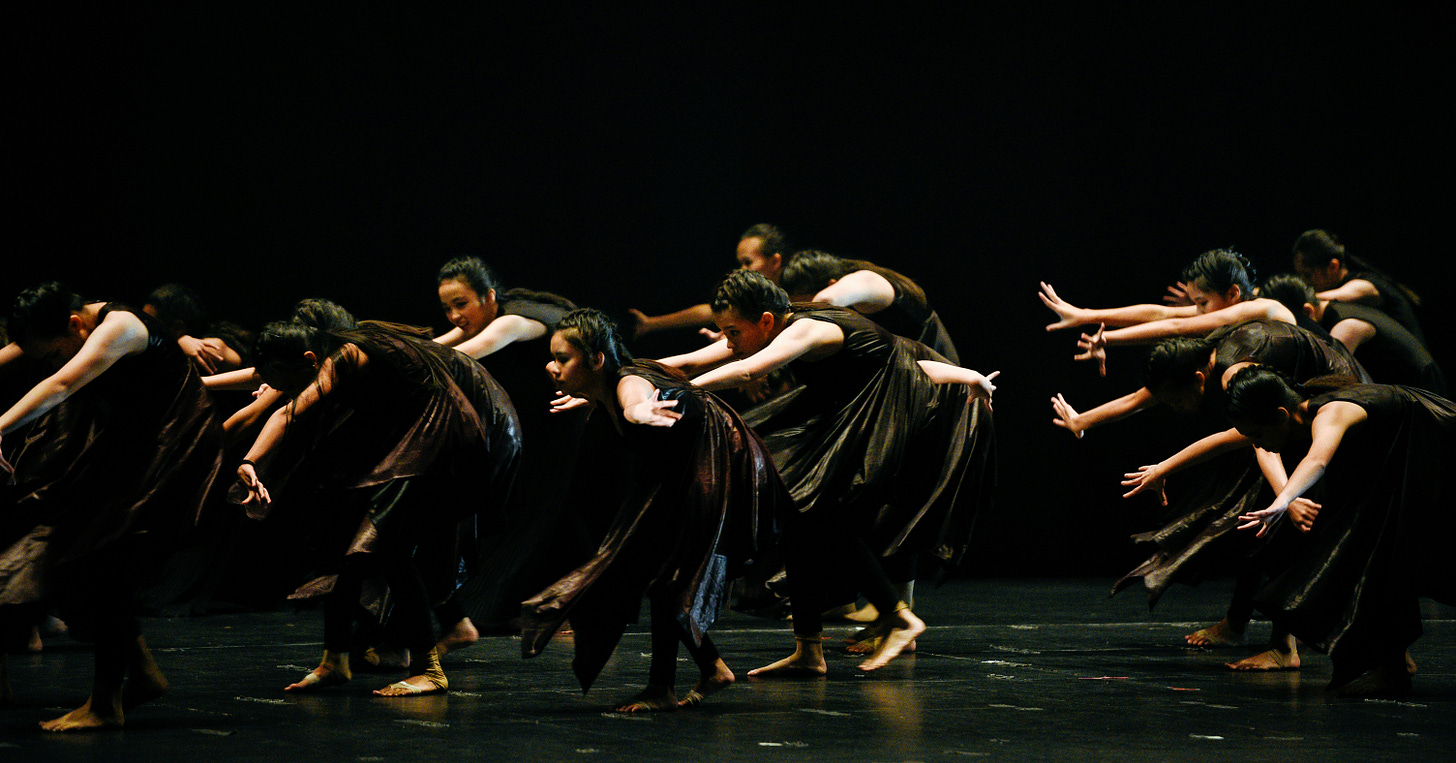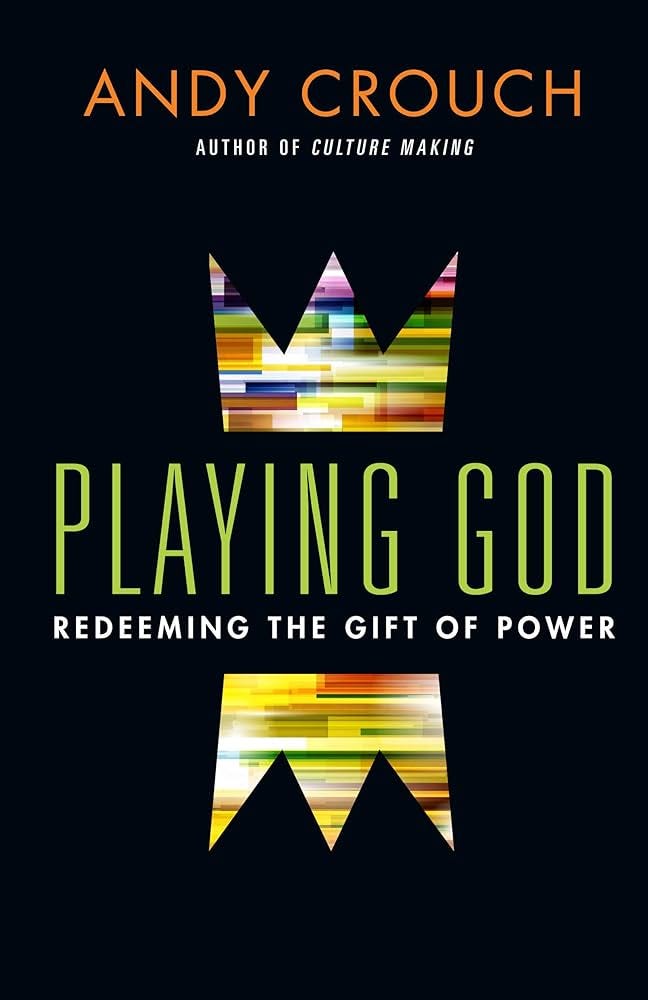We all know what it’s like to admire someone from far away. Whether it’s a potential mentor at work, a high school crush, an expert in your field, or someone you’d like to be friends with, we notice that person from a distance. We want to get closer to them and see how our lives might intersect with theirs.
In high school I started feeling like I was missing Jesus. I had grown up in church and cared a lot about everything that went on there. But Jesus didn’t feel familiar. I had done all the things my church wanted young people to do, but it didn’t feel like a close relationship. I was thirsty for that closeness that some people seemed to have, and I felt awkward in that lack of closeness.
Part of the awkwardness in my search to get closer to Jesus was that I had been taught my whole life that we were the insiders. Christians are the ones who claim to be experts on Jesus, trying to introduce the rest of the world to him—we were supposed to be the ones with inside knowledge that everyone else needed. Why does it seem sometimes that Christians don’t know Jesus very well?
As I began to explore these awkward questions, one glitch I noticed was that sometimes the focus seemed to be more on doing (Sunday) church right than on Jesus. In my experience, we definitely heard about him every week during communion, and also at the weekly invitation to get baptized at the end of the sermon. But I was thirsty for more.
In my search, then, I was surprised to eventually learn that this was a wider trend beyond just a handful of congregations or one or two denominations. I was relieved to hear from multiple authors and thinkers who were describing their concerns about a narrow or shallow “Christology” (an underdeveloped understanding of who Jesus is). Dallas Willard has even described one version of this as “vampire Christianity.” He defines this as Christians who focus almost exclusively on the death of Christ because they want “a little of Jesus’ blood” (so they can have salvation and avoid hell in the afterlife), but are much less interested in the work of deep formation to actually become like Jesus in their whole lives. (Ironically, this demand of blood leads to spiritual anemia).1
(There was even a warped version of this narrow over-emphasis that included a pressure to proselytize strangers. The potential scenario of your seatmate on an airplane going to hell—because you didn’t tell them about salvation by the crucifixion of Jesus—has caused anxiety for some in my generation).
What would it look like if Christians imitated all of Jesus? If our ideas about Jesus are too small, then our imitation of Jesus will also be small. How can we learn to imitate more of Jesus?
In Luke 24, the risen Jesus is walking and talking—incognito—alongside two travelers on the road to Emmaus. They don’t know it’s him, and they explain their grief and dismay at the crucifixion of Jesus of Nazareth, whom they had hoped was the king coming to redeem their people. Eventually Jesus explains to them “why the Messiah should suffer these things and then enter into glory,” by interpreting scripture, “beginning with Moses and all the prophets,” taking them back through “all the scriptures” that point to him.
Remember this is where a misunderstanding of prophecy could be unhelpful. If we imagine Jesus listing off Old Testament predictions about a Messiah dying for our sins like a checklist, that’s too small. All the scriptures point to Jesus—remember his claim in Matthew 5 that he’s fulfilling the whole Torah.
Just because we live two thousand years after Jesus expanded the understanding of the Emmaus travelers (and can read Luke’s report of their story) doesn’t mean that we’ve filled in all the gaps and ironed out all the ignorance. For my part, I felt much less alone and less awkward in my search when I realized that other churches and writers were naming the need to know Jesus more deeply than they had been taught.
That learning should continue in every season; Jesus is always larger than our current understanding. We will, and we can grow deeper with our imitation of Jesus in every season.
My search for what felt “missing” in my experience of Jesus continued into adulthood and our years of cross-cultural ministry—Jesus steadily got larger and larger. During that season, my husband Alan was researching Christology in the theory and practice of foreign missions. Sadly, the history of missions is full of examples of “vampire Christianity” (often well-intentioned) that focused almost exclusively on the death of Christ and overwhelmingly on numbers of conversions but little on whole life transformation to Christ-likeness.
In our dialogue with other cross-cultural ministers, this conversation often referred to a gold standard text that describes this insufficiency. David Bosch in his book Transforming Mission: Paradigm Shifts in the Theology of Mission, insists that we are saved by all of Christ, not just his death, and he writes about the urgent need to teach and train people to follow all of Jesus in cross-cultural ministry at the frontiers of faith.2
Bosch names six “multidimensional” movements of Jesus (Incarnation, Crucifixion, Resurrection, Ascension, Pentecost, and the Second Coming), and suggests that we need to pattern our communal lives after all of the movements of Christ—acknowledging that different “movements” will need to become the primary move in different seasons of the life of a church.
As Alan developed this material for our context, he realized that Bosch had overlooked one aspect—the “Life and Teaching” of Jesus deserves the second spot in this paradigm, bringing the total to the “Seven Movements of Christ.”3
This is not just an intellectual exercise, but how we are meant to enter God’s story with our actual imitation of Jesus in our daily lives. When the overwhelming focus is sharing information for people to believe in their heads, it’s as if we’re successfully getting people to sign up for an amazing dance class but never teaching them how to dance.
Because Jesus was never just an idea. Of course, it absolutely matters what people think as they change their minds about Jesus, but giving our ideas and beliefs to Jesus was never supposed to be a finish line. Instead, giving our allegiance to Jesus should be a starting line and a threshold into a completely new way to be human. We will need all the movements of Christ as we move through the world together.
The apostle Paul had a lot to say about lives transformed by Jesus as he wrote letters to the earliest churches. He often used the phrase “in Christ” to describe how their whole lives were being brought “under the influence” of Jesus—New Testament scholar Michael Gorman counts the phrase as occurring almost 100 times in Paul’s writings. This is more than intellectual assent (believing Jesus “in my heart”); Gorman encourages us to see “in Christ” language as “spatial.” This goes beyond beliefs and ideas; we are entering into “new territory” together.4
We were never meant to passively receive and accept ideas and call that faith. Instead, the whole life of Jesus becomes our template or pattern. All of the Seven Movements of Christ become our paradigm for participation as we refract his light into the world. In different seasons we will need to imitate the different faces of Jesus: Incarnation, Life and Teaching, Crucifixion, Resurrection, Ascension, Pentecost, or Second Coming. But how does “participation ‘In Christ’” work? How are we supposed to imitate all of Jesus?
Living into the Seven Movements of Christ prioritizes the full narrative of Jesus in scripture becoming our template for daily life. For example, Incarnation teaches us that since God came to live among us in a human body as Jesus, we imitate that move by being radically present with people, even at the risk of our own vulnerability. We imitate Jesus’ Life and Teaching by living the upside-down ethics of the Kingdom of Heaven in our daily lives as we practice loving neighbors and enemies. We imitate Jesus’ Crucifixion by risking suffering to pour out privilege and power on behalf of the oppressed.
Then we participate in Jesus’ Resurrection by freely practicing creative love—when we know death has been defeated, every act of love we do contributes to New Creation, even now in this world of groaning decay. We participate in Jesus’ Ascension when our fear shrinks in the face of risky suffering because we know the crucified and risen God is on the throne of the universe. We participate in the Spirit of Christ’s arrival at Pentecost when we do not limit our expectations of God’s movements in the world to the current limits of our group’s understanding—the Spirit of God is always creatively translating into new contexts. We participate in Jesus’ Second Coming when we nuance our sense of how time works—our urgency is located in the wider context of God’s mercy and generous hospitality.
Many of us remember the stretchy WWJD bracelets from the 90’s that were supposed to remind us to ask ourselves “What Would Jesus Do?” throughout the day—the intention was good even if the marketing might have been cheesy. Imitating Christ is a lifelong vocation, and it’s hard—many people have wrestled with how to make Jesus the focus of our decisions and our days. Rehearsing the “Jesus Moves” that we witness in the testimony of scripture can help focus our intentions.
Our imitation of all the Seven Movements of Christ are described at much more length in Alan’s article. While he was completing that research, on a whim he googled, “Seven Movements of_________,” and he was delighted to find a website by a ballet instructor describing the “Seven Movements of Dance.”5 She explains how these “seven movements that provide the basis of ballet pedagogy” are the foundational moves that—when learned well and practiced often—can then be arranged in countless combinations to create endless beauty in different ballets by different artists.
We also imitate Jesus in the regular rehearsal of our daily lives in endless combination—maybe Tuesday you had to lean into Jesus’ ascension, but on Friday you were rehearsing incarnation. Humbly admitting his inexperience with dance, Alan paired the Seven Movements of Christ with the Seven Movements of Dance (of course, his own lack of dance coordination makes this playful analogy even more delightful, especially if you know him).
Just like in ballet (or any sport or learning any new art or craft), our skills in imitating Jesus build with practice. Instead of “practice makes perfect,” Alan prefers to say “practice makes the complicated automatic.” The analogy can extend a little further when we reflect on how ballet is often performed as a company—participating “in Christ” is also a group project. We are never alone; we are learning and practicing these Jesus moves together in the church (who is the collective body of Christ).
We are meant to imitate Jesus in our ordinary lives. Contrary to the passive posture inherent in many definitions of salvation, our active participation “in Christ” is more than the obedience of a puppet—this is how Jesus wants us to creatively carry the love of God through the world. Our day-to-day rehearsal of Jesus’ life is not for show or by force—we know from texts like John 13 and Philippians 2 that we’re often imitating the poured-out power of Jesus at the margins or under the radar of many who wield positions of power in our communities. Andy Crouch reflects on this participation-by-imitation in his book on power—he insists that humans are meant to “play God,” and “Jesus is the God we are meant to play.”6
Where do you see the Seven Movements of Christ in your life so far? When it comes to imitating the different aspects of Jesus (Incarnation, Life and Teaching, Crucifixion, Resurrection, Ascension, Pentecost, and Second Coming), we probably all have one we favor over others. Each of us probably have in our history one that’s been emphasized to the exclusion of others, one we don’t feel strong in yet, and another that we’re curious about.
If one part of Jesus was over-emphasized for you to the near-exclusion of the other moves, this is like trying to put together a puzzle without seeing the whole puzzle box top (and anytime we take one part of the story and make it the whole story, we inevitably warp the story). We are invited to learn to live into the fuller story of Jesus. Focusing only on one feature of Christ is like reading one chapter in the middle of a book, or only going to Act 2 of a Three-Act play, or only watching The Empire Strikes Back, or learning to drive only ever in your own neighborhood.
It is more fun to assemble the whole puzzle and read the whole book and see the whole play and watch the whole series and expand your driving skills into other cities and states. As we imitate Christ in a complex world, we are rehearsing together the larger story of Jesus. We will together build muscle memory and flexibility, and we will be able to translate and code-switch and contextualize as we learn which moves are needed in different situations and different seasons.
I am grateful to always be searching for more of Jesus.
©2025 Ladye Rachel Howell
See The Great Omission: Reclaiming Jesus’s Essential Teachings on Discipleship by Dallas Willard, 14.
See Transforming Mission: Paradigm Shifts in Theology of Mission by David J. Bosch.
See Cruciformity: Paul’s Narrative Spirituality of the Cross and also Participating in Christ: Explorations in Paul’s Theology and Spirituality both by Michael J. Gorman.
See Playing God: Redeeming the Gift of Power by Andy Crouch.













Thank you for this, Ladye Rachel. You are a gifted writer and thinker and communicator, and I am grateful to be receiving your work. I remember meeting Alan a few months ago, and I appreciate him, too.